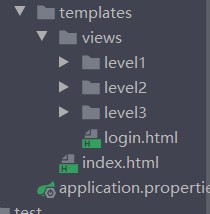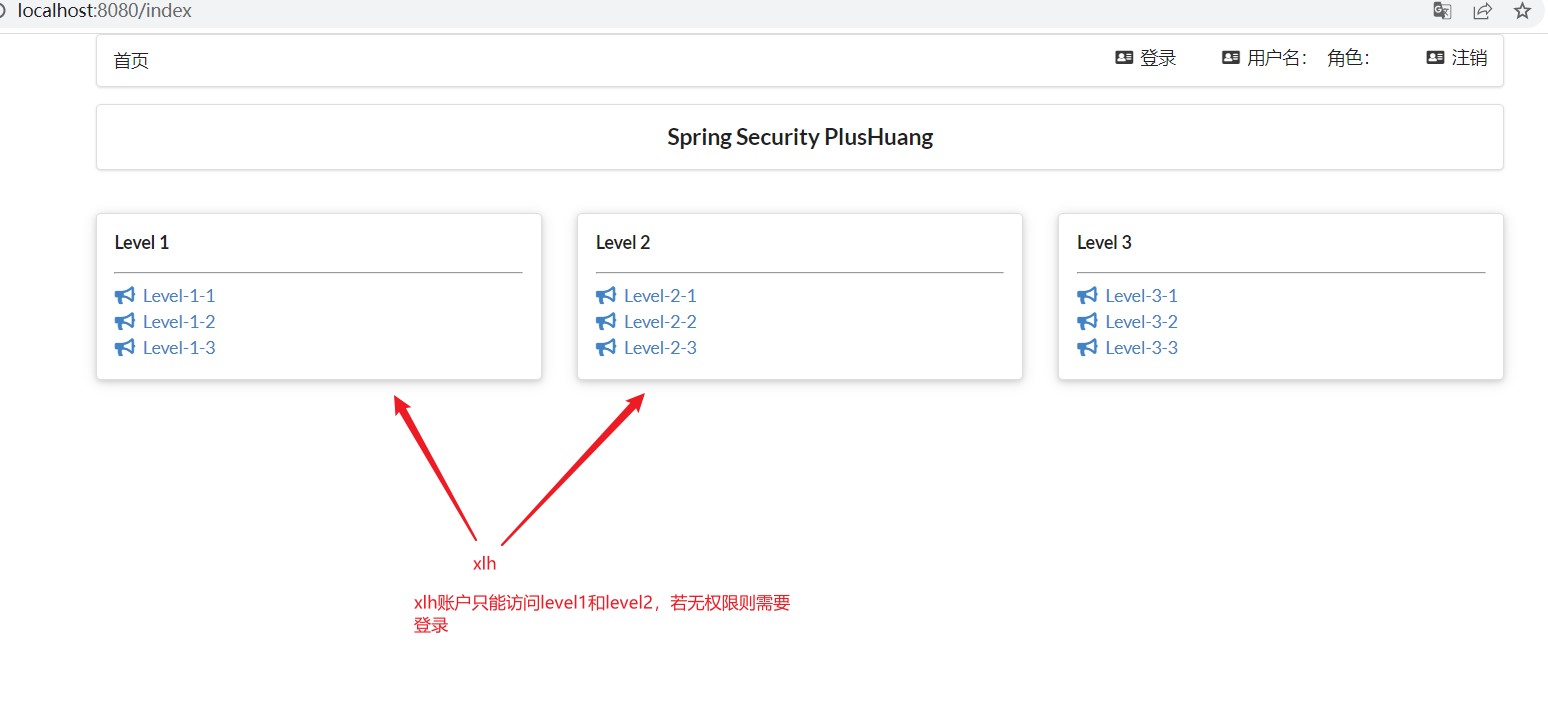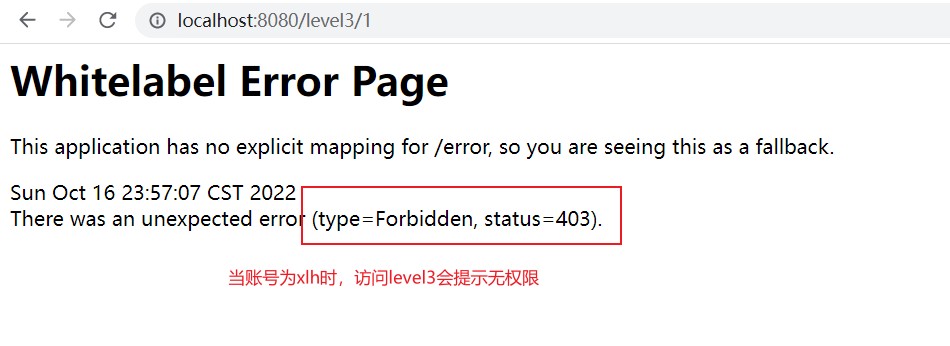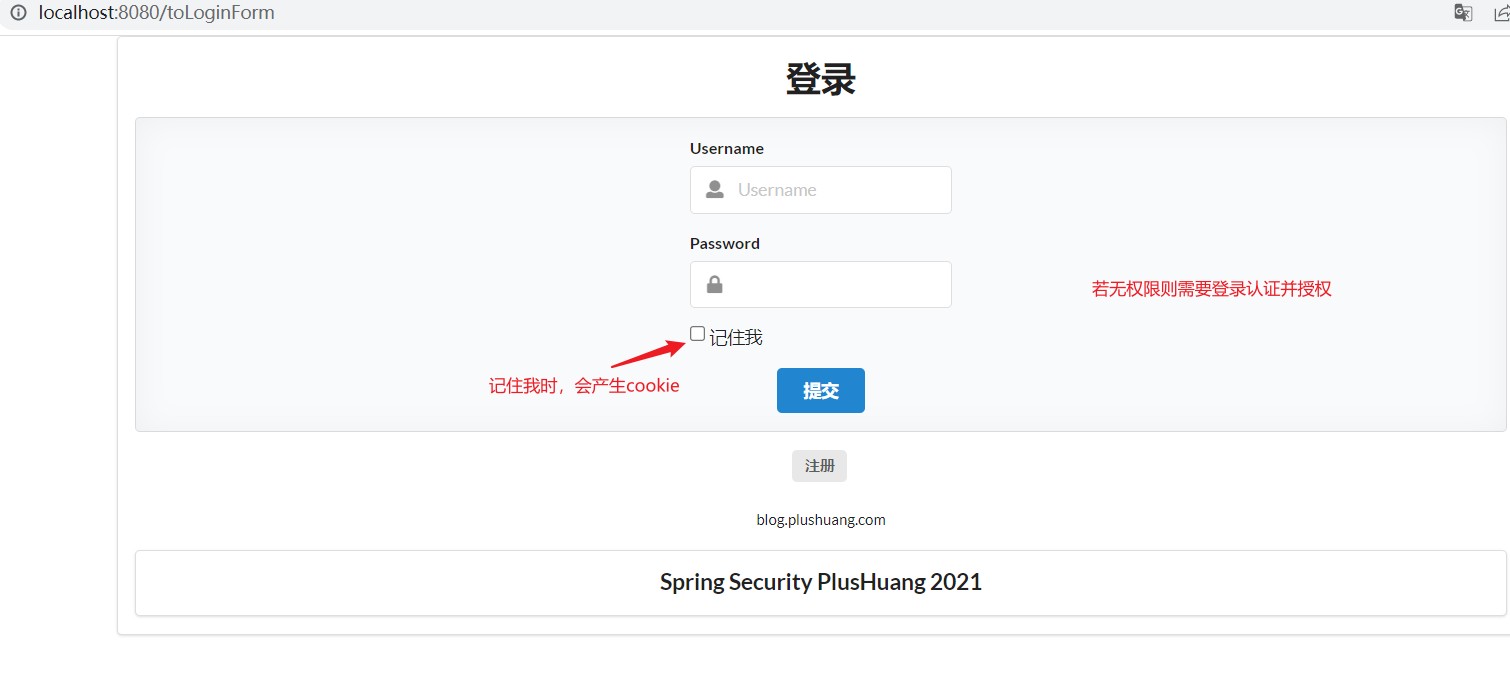认证和授权
认证(authentication)
认证意味着确认你自己的身份,是关于验证你的凭据,如用户名/邮箱和密码,以验证访问者的身份。系统确定你是否就是你所说的使用凭据。常见的认证方式有:
- 手机和短信验证码认证
- 用户名密码认证
- 邮箱和邮件验证码认证
授权意味着授予对系统的访问权限。授权发生在系统完成身份认证之后,最终会授予你访问资源(如信息,文件,数据库,资金,位置,几乎任何内容)的完全权限。简单来说,授权决定了你访问系统的能力以及达到的程度。
授权是确定经过身份验证的用户是否可以访问特定资源的过程。就像给予某人官方许可做某事或任何事情。
Spring Security简介
Spring Security是 Spring 家族中的一个安全管理框架,是一个功能强大且高度可定制的身份验证和访问控制框架。认证和授权就是Spring Security作为安全框架的核心功能。
官方文档地址:https://spring.io/projects/spring-security/#learn
小试牛刀
导入依赖
创建一个 Spring Boot 的 web 项目,并导入部分依赖,这里为方便测试,直接利用 Thymleaf 进行前后端交互。pom文件如下:
1
2
3
4
5
6
7
8
9
10
11
12
13
14
15
16
17
18
19
20
21
22
23
24
25
26
27
28
29
30
31
32
33
34
35
36
37
38
39
40
41
42
43
44
45
46
47
48
49
50
51
52
53
54
55
56
57
| <?xml version="1.0" encoding="UTF-8"?>
<project xmlns="http://maven.apache.org/POM/4.0.0" xmlns:xsi="http://www.w3.org/2001/XMLSchema-instance"
xsi:schemaLocation="http://maven.apache.org/POM/4.0.0 https://maven.apache.org/xsd/maven-4.0.0.xsd">
<modelVersion>4.0.0</modelVersion>
<parent>
<groupId>org.springframework.boot</groupId>
<artifactId>spring-boot-starter-parent</artifactId>
<version>2.7.4</version>
<relativePath/>
</parent>
<groupId>com.demo</groupId>
<artifactId>spsc</artifactId>
<version>0.0.1-SNAPSHOT</version>
<name>spsc</name>
<description>Demo project for Spring Boot</description>
<properties>
<java.version>1.8</java.version>
</properties>
<dependencies>
<dependency>
<groupId>org.springframework.boot</groupId>
<artifactId>spring-boot-starter-web</artifactId>
</dependency>
<dependency>
<groupId>org.thymeleaf</groupId>
<artifactId>thymeleaf-spring5</artifactId>
</dependency>
<dependency>
<groupId>org.thymeleaf.extras</groupId>
<artifactId>thymeleaf-extras-java8time</artifactId>
</dependency>
<dependency>
<groupId>org.springframework.boot</groupId>
<artifactId>spring-boot-starter-security</artifactId>
</dependency>
<dependency>
<groupId>org.springframework.boot</groupId>
<artifactId>spring-boot-starter-test</artifactId>
<scope>test</scope>
</dependency>
</dependencies>
<build>
<plugins>
<plugin>
<groupId>org.springframework.boot</groupId>
<artifactId>spring-boot-maven-plugin</artifactId>
</plugin>
</plugins>
</build>
</project>
|
前端
前端展示页面较为简单,结构如下(level1/2/3分别对应vip1/2/3,login为自定义登录页,index为首页):


Spring Security配置
1
2
3
4
5
6
7
8
9
10
11
12
13
14
15
16
17
18
19
20
21
22
23
24
25
26
27
28
29
30
31
32
33
34
35
36
37
38
39
40
41
42
43
44
45
46
47
| package com.demo.spsc.config;
import org.springframework.security.config.annotation.authentication.builders.AuthenticationManagerBuilder;
import org.springframework.security.config.annotation.web.builders.HttpSecurity;
import org.springframework.security.config.annotation.web.configuration.EnableWebSecurity;
import org.springframework.security.config.annotation.web.configuration.WebSecurityConfigurerAdapter;
import org.springframework.security.crypto.bcrypt.BCryptPasswordEncoder;
@EnableWebSecurity
public class SecurityConfig extends WebSecurityConfigurerAdapter {
@Override
protected void configure(HttpSecurity http) throws Exception {
http.authorizeHttpRequests()
.antMatchers("/").permitAll()
.antMatchers("/level1/**").hasRole("vip1")
.antMatchers("/level2/**").hasRole("vip2")
.antMatchers("/level3/**").hasRole("vip3");
http.formLogin().loginPage("/toLoginForm").usernameParameter("username").passwordParameter("password").loginProcessingUrl("/login");
http.logout().logoutSuccessUrl("/");
http.rememberMe().rememberMeParameter("remember");
}
@Override
protected void configure(AuthenticationManagerBuilder auth) throws Exception {
auth.inMemoryAuthentication().passwordEncoder(new BCryptPasswordEncoder())
.withUser("xlh").password(new BCryptPasswordEncoder().encode("123456")).roles("vip1","vip2")
.and()
.withUser("root").password(new BCryptPasswordEncoder().encode("123456")).roles("vip1","vip2","vip3")
.and()
.withUser("guest").password(new BCryptPasswordEncoder().encode("123456")).roles("vip1");
}
}
|
Controller
1
2
3
4
5
6
7
8
9
10
11
12
13
14
15
16
17
18
19
20
21
22
23
24
25
26
27
28
29
30
31
32
33
| package com.demo.spsc.controller;
import org.springframework.stereotype.Controller;
import org.springframework.web.bind.annotation.PathVariable;
import org.springframework.web.bind.annotation.RequestMapping;
@Controller
public class RouterController {
@RequestMapping({"/","/index"})
public String index(){
return "index";
}
@RequestMapping("/toLoginForm")
public String toLogin(){
return "views/login";
}
@RequestMapping("/level1/{id}")
public String level1(@PathVariable("id") int id){
return "views/level1/"+id;
}
@RequestMapping("/level2/{id}")
public String level2(@PathVariable("id") int id){
return "views/level2/"+id;
}
@RequestMapping("/level3/{id}")
public String level3(@PathVariable("id") int id){
return "views/level3/"+id;
}
}
|
效果









.jpg)
.jpg)
.jpg)
.jpg)
.jpg)
.jpg)
.jpg)
.jpg)
.jpg)
.jpg)
.jpg)